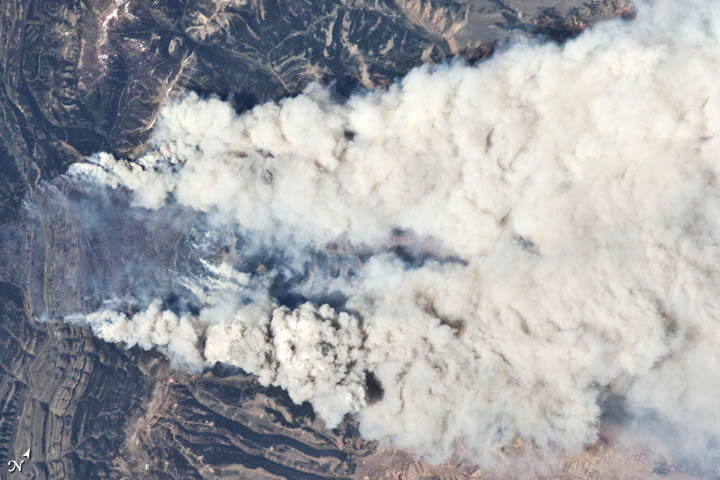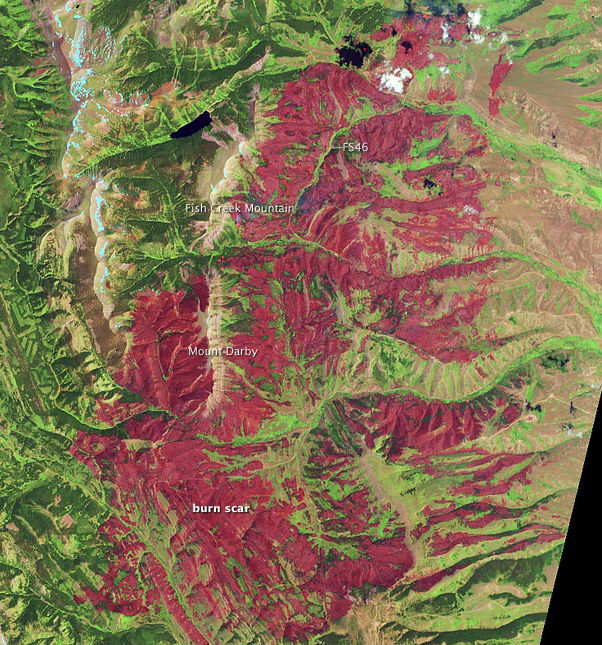Astronaut's Photo Captures Blazing Wyoming Wildfire

Astronauts and satellites alike have captured ominous images from space of a fast-growing wildfire that is blazing across Wyoming.
The Fontenelle Fire, burning in the Bridger-Teton National Forest near the state's western border with Idaho, was first reported on the afternoon of June 24. More than 850 people are battling the blaze, and it is only 25 percent contained.
The fire has shut down roads in the region, but sofar has not destroyed any buildings or caused any injuries.
The Fontenelle Fire's reach doubled in size between June 28 and July 6, when it grew from 25,000 acres to its current size of 57,324 acres.
A crew member aboard the International Space Station, flying approximately 240 miles (386 kilometers) above Earth, captured an arresting shot of the fire's billowing smoke on June 27, the day before the blaze began its precipitous growth.
More recent satellite images, captured on July 4, show the burn scare the fire has left in its wake. In a false-color image, burned areas appear red, and vegetation that was spared appears bright green.
Dozens of fires are burning around the western United States, andatmospheric models indicate that winds have carried smoke from the multiple blazes out over the Atlantic Ocean and as far east as Greenland.
Breaking space news, the latest updates on rocket launches, skywatching events and more!
Wyoming's Fontenelle Fire is continuing to creep to the northeast, and officials expect it won't be fully contained until at least July 22.
Follow OurAmazingPlanet on Twitter @OAPlanet. We're also on Facebook and Google+.
Join our Space Forums to keep talking space on the latest missions, night sky and more! And if you have a news tip, correction or comment, let us know at: community@space.com.
OurAmazingPlanet was founded in 2010 by TechMediaNetwork, which owned Space.com at the time. OurAmazingPlanet was dedicated to celebrating Earth and the mysteries still to be answered in its ecosystems, from the top of the world to the bottom of the sea. The website published stories until 2017, and was incorporated into LiveScience's Earth section.


